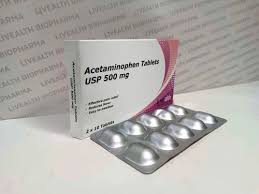For many parents, the sound of their newborn’s first cry is a moment of pure joy, signaling the transition from life in the womb to independent existence.
However, for healthcare professionals in labor wards, that first cry marks the beginning of a critical race against time—one that can determine the survival of a baby. The “Golden Minute,” a term used to describe the first 60 seconds after birth, is a precious window during which life-saving interventions can mean the difference between life and death for a newborn.
Despite advances in maternal and child health care, neonatal mortality remains a significant challenge in Kenya. According to the most recent Kenya Demographic and Health Survey (KDHS), neonatal mortality rates have decreased marginally, but the current rate of 21 deaths per 1,000 live births is still far from the Sustainable Development Goal target of 12.
According to Maternal, neonatal and child health (MNCH) specialists many of these deaths could be prevented with timely interventions during that critical first minute of life, especially for babies born prematurely, with respiratory issues, or in complicated deliveries.
A Race against the Clock
Speaking at an event hosted by the Kenya Obstetrical and Gynecological Society (KOGS) and the inter religious caucus in Nairobi, to foster collaboration between religious leaders and gynecologists, in order to enhance the education and awareness of critical women’s health. Supa Tunje, Pediatric Neurologist and President of the Kenya Pediatrics Association, emphasized the importance of this first minute.
“The first cry of a baby is critical—it’s the first sign of a successful transition from fetal life to independent breathing. If the baby doesn’t cry, we have only 60 seconds to act,” Dr. Tunje explained.
This “Golden Minute” requires healthcare providers to be highly skilled and prepared to recognize danger signs in neonates. Newborns who are not breathing, or whose breathing is weak, need immediate resuscitation with a bag and mask ventilation to clear their airways and initiate proper breathing.
According to Dr. Tunje, the newborn resuscitation algorithm must be standardized and practiced regularly in all newborn delivery units.
“Approximately 50 percent of babies born in Kenya are not crying at birth and need immediate intervention to begin breathing on their own.”
However, a worrying statistic reveals that 20 percent of trained healthcare providers fail to effectively ventilate due to skill decay or errors in technique such as air leaks or improper ventilation rates.
The Tools and Skills to Save Lives
“Every labor ward in Kenya must be equipped with effective resuscitation tools and the trained personnel to use them,” Dr. Tunje emphasized. “Ventilation equipment such as a bag-valve mask (BVM) device, Continuous airway pressure (CPAP) machines along with oxygen, is crucial in stabilizing a newborn in the first minute.” This practice is not only lifesaving and not just about getting the baby to cry; it’s about ensuring that they can breathe on their own and avoid further complications like hypoxia or brain injury.
Dr. Tunje also stressed the importance of thermal protection, especially for preterm or low-birth-weight babies who are more vulnerable to hypothermia. “If we don’t regulate their body temperature, we risk losing them to conditions like hypothermia, which is a leading cause of neonatal death,” she said.
Newborn units and labor wards, she explained, must be prepared for all potential complications—from premature births and multiple pregnancies to maternal conditions like diabetes, hypertension, or infections.
“A team approach is key,” she noted. “There should always be a designated team leader and at least one person whose sole responsibility is managing the newborn immediately after birth and one managing the mother.”
To combat the high rates of neonatal mortality, Kenya has been making strides in equipping healthcare providers with the necessary skills and tools to handle high-risk deliveries.
Last year, Kenya’s Ministry of Health, in collaboration with the Clinton Health Access Initiative (CHAI), rolled out essential and comprehensive neonatal care training program. This training focuses on the critical skills required for resuscitating newborns, managing common neonatal complications such as prematurity, birth asphyxia and providing thermal care.
One notable success story is the Jaramogi Oginga Odinga Teaching and Referral Hospital (JOOTRH), where healthcare providers have embraced innovative approaches to resuscitation. After attending specialized neonatal care training, the hospital introduced a trolley system fitted with Continuous Positive Airway Pressure (CPAP) equipment to transport preterm babies from the labor ward to the newborn unit. This system helps stabilize the baby’s temperature and oxygen levels during transportation, reducing the risk of complications.
Most healthcare workers literally runs with the newborns while transporting from delivery rooms to newborn units and in the process may cause hypothermia or hyperthermia since most newborns regulate their temperature less efficiently and requires thermal protection measure at birth and during the first days of life.
Roselyn Akinyi, a nurse at JOOTRH, shared the impact of the training and innovation: “Before, we used to receive cold babies, and hypothermia was a major issue. But now, after the MoH and CHAI led training, we’re receiving warm, breathing babies. It’s made a huge difference in how we care for them.”
Limitations in the newborn care
Kenya committed to implement global strategies aimed at accelerating reduction in newborn mortality such as Newborn Action Plan (ENAP) that aims to end preventable newborn deaths, reduce disability and end still births by 2030.
One of the ENAP target is set up of functional level 2 newborn care units that are able to provide comprehensive newborn care for small and sick newborns including photo-therapy and Continuous Airway Pressure machine (CPAP) in 80 percent of the counties.
However, many Counties are at different level of putting up a standard care infrastructure to care for pregnant women and newborns including small and sick newborns.
In some counties in Kenya, neonatal mortality rates are as high as 78 deaths per 1000 live births, much higher than the national rates.
Standard management tools for newborns especially those born prematurely and of low birth weight are very limited in Kenyan facilities.
There is lack of access to comprehensive newborn care infrastructure and equipment’s in most county hospitals. Equipment’s used in thermoregulation such as incubators, radiant warmers airway equipment’ such as suctioning equipment’s, breathing equipment’s such as CPAP, portable ventilator, oxygen and its accessories such as, pulse oximetry, oxygen blenders, circulation equipment’s, radiant warmers, disability equipment s and essential newborn drugs such as caffeine-citrate are most of the times inadequate in most of the level 2 county facilities.
Even though standard management for thermal care for premature and low birthweight infants is use of incubators, many low- and middle-income countries like Kenya have limited access to efficient equipment’s. In most facilities there are no Kangaroo Mother Care Wards and Mothers are forced to roam around the newborn wards with their newborns tied at KMC positions.
Dr Tunje said that newborn units should be near deliver rooms to enhance faster newborn transport to an area where optimal care can be given.
As timely recognition of problems and prompt referrals of high risk pregnancies can save lives, experts blame lack or limited antenatal care (ANC) visits, saying that “the minimum ANC visits should be at-least 4 visits to enable healthcare workers asses level of any risk and need for referrals earlier” said Dr Kireki Omanwa gynecologists and President Kenya Gynecologists Association, many mothers still present themselves with high risk delivery without any ANC visit.
“The best referral is when the baby is still in the uterus since newborn transport ambulance should be equipped like mini-NICU and we have limited access of these ambulances.”
Dr Tunje also pointed out the issues of very few Newborn Intensive care Units (NICU) in the country.
Immediately after birth, the baby should be kept warm at all times, Thermal care, Akinyi stressed, should be a continuous process. The delivery room should be prewarmed at 25 degrees Celsius keeping the baby warm by use of hat, through skin-to-skin contact with the mother or using special warming devices such as radiant heaters or heated water-filled mattresses is crucial.
The first hours after birth are a vulnerable time, and if newborns are not kept warm, they are at a greater risk of death or long-term health problems.
“Keeping the baby warm, particularly those born prematurely is one of the most effective ways to reduce neonatal mortality,” Akinyi explained. “We now know that up to 75 percent of neonatal deaths can be prevented simply by ensuring proper thermal protection.”
Despite the high neonatal mortality rates, the efforts to strengthen newborn care protocols, by enhancing resuscitation skills, introducing innovative solutions in the labor ward can make a difference. “With better training” Dr Tunje say, “improved equipment, and a commitment to acting swiftly during the Golden Minute the healthcare workers can help reduce neonatal deaths.”
Dr. Tunje concluded that, “If every healthcare facility, every labor ward, and every healthcare provider commit to the Golden Minute strategy and applies it consistently, we can significantly reduce neonatal deaths in Kenya. It’s about giving every baby the best possible start in life.”
As the country moves forward in its efforts to combat neonatal mortality, the Golden Minute will remain the touchstone of progress, offering a window of opportunity to save lives and ensure every newborn has a chance to survive and thrive.














